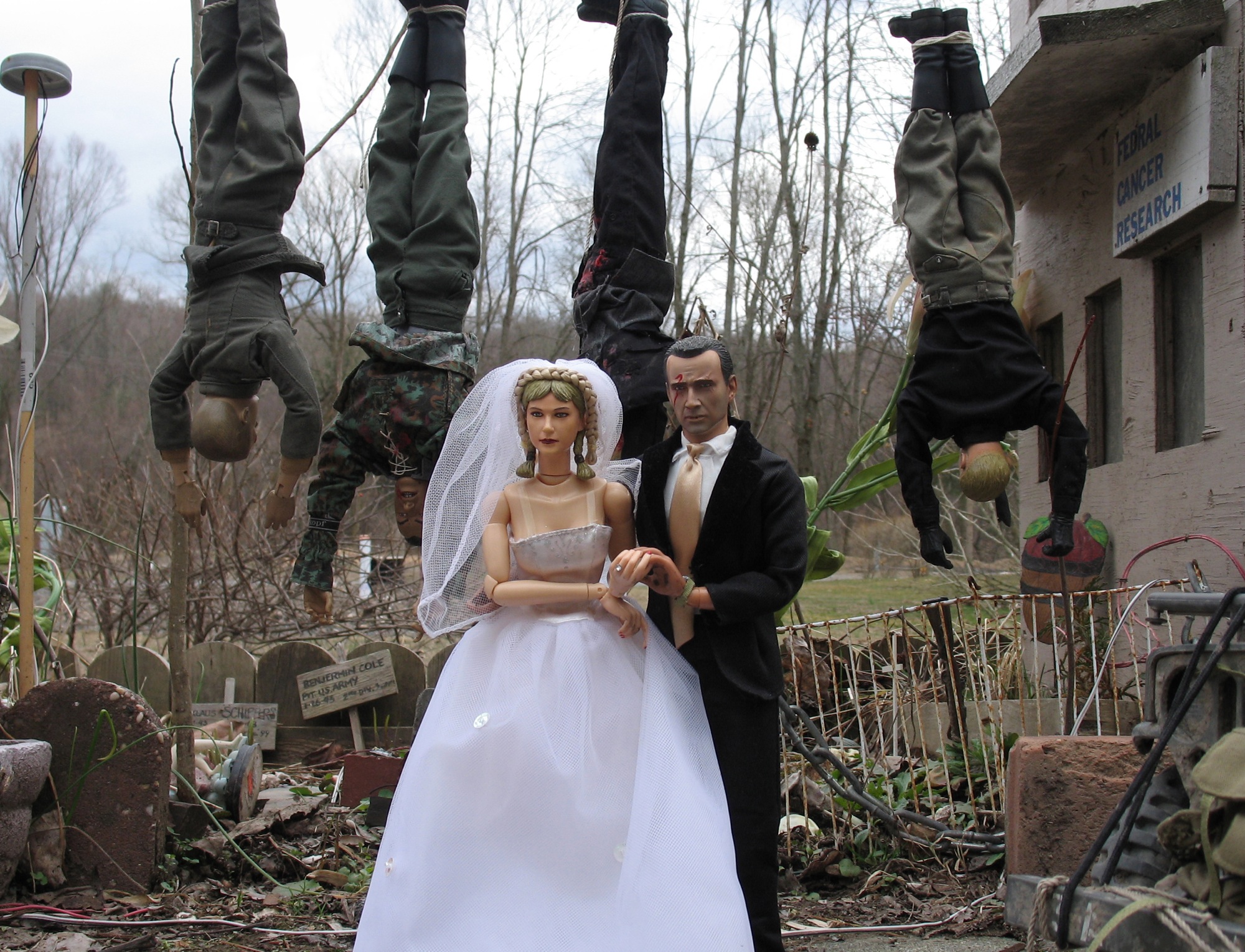Notes On Frans Zwartjes’s Living (1971)

While researching Futurist filmmakers this morning, I somehow stumbled across this Dutch filmmaker named Frans Zwartjes (who’s not a Futurist). I watched a few of his short films (which you can find at ubuweb) and then decided to track down more information on him. Turns out, Mike wrote about one of Zwartjes’s films called Living at his old film site. I began reading his words and when I got to the line “it remains not only my favorite Zwartjes film, but also one of the best films that I’ve ever seen,” I quickly decided to stop reading so as not to spoil my initial viewing experience with any preconceived ideas. Instead, I just went and watched it here . Fuck’n A, folks. I’m with Mike. This film is utterly mesmerizing. I recommend sacrificing 15 minutes of your life to it.

Claymation Wins Again
Plato’s Allegory of the Cave (in clay) from Bullhead Entertainment:
Ornette Coleman on Writing + B/W Films on B/W = Sweet(forgive)ness
Ornette has been writing a book on harmolodics but it’s yet to be published.
Someone should really turn the tables on that one.
On over-writing, distance, fiction, theater, and film: A series of disorganized thoughts
Last night, I saw Black Swan.
Last night, I read Linda Lê’s The Three Fates.
Last night, I didn’t fall asleep until after 4am.
The first two things contributed to the last thing. I’m usually a very good sleeper. It’s one of the few ways I cope with anxiety: sleep. It is something I’ve trained myself to do since I was a kid. That sounds stupid, but I’m sure a lot of people here have problems sleeping. We’re an anxious lot, what else can I say?
Last night, while I was trying to get to sleep, I kept thinking about Linda Lê’s book. The Three Fates is a book about a two sisters and a cousin (the three fates) who want to bring their old father (called King Lear) from Vietnam to France to show off their successes. The three fates were whisked away from Vietnam before the fall of Saigon. Their father remained. The book is written in this hyper-stylized way, seemingly over-written, over-the-top, a fairy tale with characters unabashedly stolen from other literary works (notably: plays). What sticks to me with this book though is how over-written it is. Every sentence is excessive. If this were a fiction workshop, I’d write next to every single line: “Over-written.”
Are Charlie Sheen and Emilio Estevez really brothers?
I woke up this morning and sat on a stool in the kitchen and watched a cat named Jim watch a squirrel. I did not know the squirrel’s name. It was on a fence post.
Last night, I went to a party. Joanna Ruocco was there. I started talking to her and told her I really liked her books and she said, “Publishing on a small press is like being the best at something that no one else has ever bothered to think of doing. In my head, I picture thousands of people doing really unique things that no one has ever done or will ever do again.” I laughed. When I stopped laughing I realized the person I was talking to wasn’t Joanna Ruocco. I didn’t know who it was. I didn’t see Joanna Ruocco the rest of the night.
RIP Jean Rollin (1938-2010)
French filmmaker and novelist Jean Rollin — known for his erotic, gothic horror films — passed away on Wednesday. Rollin was an auteur who described his work as “fantastique.” I’m not that big of a fan of 70s Eurosleaze, but I like the films that I’ve seen by Rollin. Above is an untranslated trailer from Night of the Hunted, which is one his “art” films (and one of my fav Rollin films; reminds me a little of Alain Robbe-Grillet).
Three things I’ve watched recently and loved plus one, or, the rational love for immorality
I’ve been watching a lot of television lately. Television off the internet. This is a preferable way to watch television. For one, I don’t have to deal with commercials. Also, I can watch a whole season at a time, and being naturally obsessive, I can’t deal with the suspense of waiting an entire week—much less a whole year for a new season to start—to find out “what happens.” That being said, I have to wait on two shows now, which brings me great displeasure and discomfort.
I’ve seen a few things recently, and I’ve struggled to understand what makes them enjoyable, what compels me to keep on watching. After all, if I weren’t watching television or movies, I could be reading. (Though to be fair to myself, I spend my days trekking through fairly dense geographic texts, so by the evening, I like to relax with my partner and our two cats, “turn off” so to speak, even though I know my time could be spent in a more “productive” manner.)
But even as I’m “turning off” and letting myself get tangled in television or film, I remain critically alert. And in the end, I realize the reason I love watching what I’ve watched is because through these particular shows and films, my morality is challenged and I not only empathize but also desire the success of immoral characters. It is not unlike the experience of reading Crime & Punishment, where the reader rallies for Raskolnikov, even though he is a murderer. We don’t want him to get caught. We want him to be ok. We want the best for him. And in the end, as his consciousness fractures under the weight of his lawfully unpunished crimes, we want him to be physically punished, just to alleviate the psychological punishment.
“So this image has an existence?”

France/tour/détour/deux/enfants (1977-78)
directed by Jean-Luc Godard & Anne-Marie Miéville
In 1976, Godard began collaborating with filmmaker Anne-Marie Miéville on a series of radically innovative works for broadcast on European television — works that Colin MacCabe termed “probably the most profound and beautiful material ever produced for television.” Displaying the rigorous intellect and irreverent wit that characterize Godard’s films, these richly experimental works break new ground both as video and as television. [more]
httpv://www.youtube.com/watch?v=XvqZKnn7LLk
The whole series is available here.
MARWENCOL: A GREAT FILM ABOUT STORYTELLING

a marriage in Marwencol
The big art documentary of 2010 is Banksy’s Exit Through the Gift Shop, a great film which my best friend told me he found profoundly reassuring and inspiring on a creative level. If this Mr. Brainwash guy, who overcomes apparent lack of actual artistic talent, can succeed through sheer force of will, then anyone can. I loved it too, but I found it profoundly depressing to watch the man mass-producing his artworks and corralling hype like a magician.
Last night, however, I saw Jeff Malmberg’s Marwencol, an extraordinary documentary about a man named Mark Hogancamp. This film was the one that affected and inspired me. It reminded me what a rich and complex experience it is to create a world.
Hogancamp is a man whose memory and motor skills were destroyed by a brutal assault that left him in a coma. Afterward, kicked out of the hospital and denied sufficient physical therapy because he had no insurance, he continued his therapy on his own, regaining his dexterity by building models. He built an entire WWII-era Belgian town called Marwencol in his backyard, and populated it with dolls who represent people in his life–people with whom he shared history he could no longer remember, so he created a new history–a lurid, sexy, illustrative history that indulges his fantasies.
Those fantasies include finding love (he was married once, before the attack, but he can’t remember anything about it, and he can’t remember the experience of sex at all, so he was psychologically a virgin when he emerged from his coma) and taking brutal revenge on the men who attacked him. The stories he tells with the Marwencol characters channel those fantasies in fascinating ways that sometimes affect his relationships with people in the real world. Have you ever written something based on a friend, had it published, then had the awkward experience of explaining this to that friend? Parts of Marwencol may seem familiar.
Hogancamp was profoundly damaged by his experience, and if you met him without knowing anything about his past or about the complexity and detail of the world he created–that is, if he just started introducing you to his dolls–you’d think he was unhinged. But I challenge anyone who’s ever experienced creative euphoria–flow–while constructing a narrative to watch Marwencol and not recognize the immersive quality of his invented world and the emotional investment he makes in it. It is a reminder of how transformative, how elevating, the process of creation can be, and how it can have the vertiginous effect of making your life feel like it’s worth more than it was the day before. (Vertiginous because on unproductive days, you feel the decline in value, too.)
I’d say more but the film is best appreciated without too much preamble, and the point of posting this is not to analyze it but to say go see it, if at all possible. Marwencol is maybe the best film I’ve ever seen about the reasons for making art.

